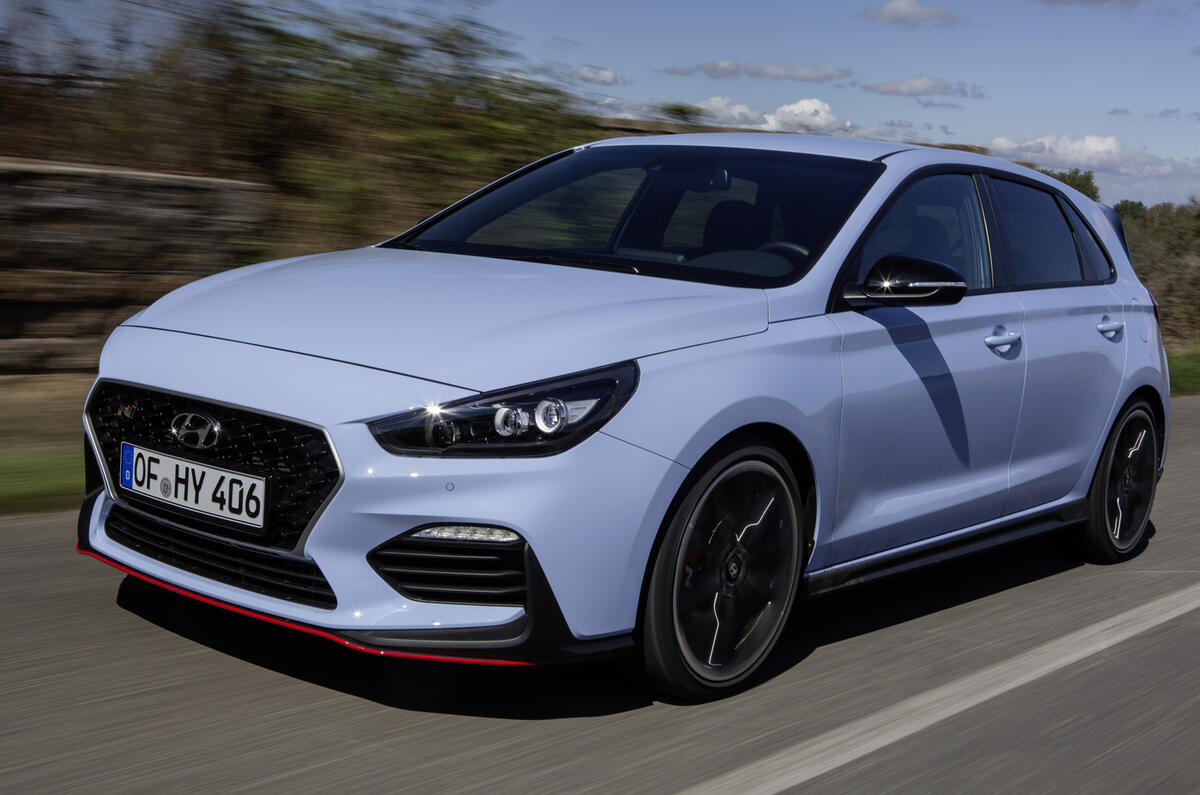What is it?
The i30N is the first hot hatch from a marque with a full works entry in the World Rally Championship, and therefore something to be taken very seriously indeed. That Hyundai’s aim has been to cram in as much performance for the least possible cost to buyers should also have your ears pricked up.
Why now? Well, the brand is on something of a roll, recording an 87% increase in European sales in the past five years. To build on that success and translate rally podiums into profit, it’s now launching a performance arm – N.
Enter Albert Biermann, long-time boss of BMW’s performance arm – M. He’s the type of man who expects the ‘ESC off’ button in a car to actually mean ‘off’ (in the i30N, it does) and yet recognises that, in 2017, a five-door hot hatch needs to be usable to be a hit in showrooms. This machine is very much his baby and the German’s presence is a major reason for optimism about its ability to entertain.
The fundamental i30N package is nothing out of the ordinary – it’s a five-door hatch with a turbocharged 2.0-litre engine driving the front wheels. What is rather unusual is the level of hardware on offer for modest outlay, with the £24,995 base model getting 247bhp, an electronic limited-slip differential and three-way adaptive suspension. An optional Performance Package sees those figures increase to £27,995 and 271bhp.
As for pace, the standard car hits 62mph from rest in 6.4sec, while the Performance model shaves 0.3sec from that time. Both will hit 155mph and manage around 40mpg combined, says Hyundai.
The five-door bodyshell is the same as that used for the standard Hyundai i30, with Hyundai claiming it to be already adequately stiff (the N gets underbody strut braces, nevertheless). Wider wheel arches have been grafted on and the N car sits up to 8mm lower.
Aggressive bumpers with deep intakes at the front, a red pinstripe on the splitter and a triangular brake light sat within the gloss-black rear spoiler are other identifiers, although perhaps none are as conspicuous as the N’s rather lovely, and unique, signature colour – Performance Blue. There’s also a choice of 18in wheels (shod in Michelin Pilot Super Sport tyres) or 19in options (bespoke Pirelli P Zero).
Components for the car’s upgraded brakes, fettled engine, toughened-up six-speed gearbox, reinforced clutch and sophisticated suspension are all either built in-house or supplied by Korean firms with whom Hyundai has a close relationship. It might have been developed at the Nürburgring, but the i30N’s physical form is refreshingly home-grown, and that’s helped it undercut the competition.
The car is also highly configurable, with settings for the e-differential, engine map, exhaust, suspension, steering and ESC. All in all, there are 1944 combinations, although by default they’re grouped into Eco, Normal, Sport and a hardcore N mode. There’s also an N Custom mode, with which you can deploy your favourite settings at the touch of a button.
Inside, the i30N gets either a 5.0in display atop the dash or an optional 8.0in unit. You get Apple CarPlay and Android Auto, as well as readouts for power, torque, turbo boost pressure, lap times and – sure to go down well with the local constabulary – acceleration. Performance Pack models also get a removable brace that stretches across the boot floor – how about that for intent?










































Join the debate
Add your comment
Price even more unrealistic
Couple of performance extras along with a price increase just makes the car look even worse value for money. Expect big discounts on new and pre-registered, dealer demos littering forecourts in a year’s time.
Sorry
Pretty Darn Good for a First Attempt
Styling is a little staid but quality will be superb and these 'N' cars are only going to get better.
Estate version please?
Would be great if they applied the N treatment to the estate. The review reads very well, not really sure why it doesn't get 4 1/2 stars? The five year warranty is particularly appealing.